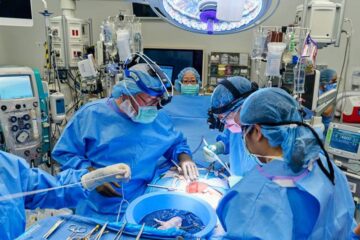Foodborne bacteria can cause disease in some breeds of chickens after all

“The main implication is that Campylobacter is not always harmless to chickens. This rather changes our view of the biology of this nasty little bug,” says Paul Wigley of Institute for Infection and Global Health at the University of Liverpool, an author on the study.
Campylobacter jejuni is the most frequent cause of foodborne bacterial gastroenteritis in the world and the Centers for Disease Control and Prevention estimate it affects approximately 1.3 million people per year in the United States. Chicken is the most common source of infections.
Infection of chickens had previously not been considered to cause disease and the bacteria were thought to be part of the normal microbiota of the birds.
In the study, Wigley and his colleagues experimentally infected birds from four commercial breeds of broiler chickens. They found that while levels of the bacteria in the intestines did not differ by breed, immune response and inflammation did, to the extent that one breed showed damage to the gut mucosa and developed diarrhea.
“Interestingly the breeds did not differ in the levels of bacteria we found in their intestines after infection, even when kept to normal slaughter age,” says Wigley. “This suggests that chicken breed has little direct effect on the risk of Campylobacter entering the food chain but has a big effect on the health of the birds.”
The most important finding, says Wigley, is that Campylobacter infection directly impacts broiler chicken health and welfare. The United States produces over 8 billion broiler chickens per year and the United Kingdom produces nearly a billion. As Campylobacter is common, or even endemic, in these industries then the scale of the impact on animal health is clear to see.
“On the positive side, we now know that chickens produce a robust immune response to infection, which in the longer term may allow us to develop vaccines,” says Wigley.
The research was funded by the Biotechnology and Biological Sciences Research Council (BBSRC) as well as a consortium of poultry producers, breeders and retailers.
mBio® is an open access online journal published by the American Society for Microbiology to make microbiology research broadly accessible. The focus of the journal is on rapid publication of cutting-edge research spanning the entire spectrum of microbiology and related fields. It can be found online at http://mbio.asm.org.
The American Society for Microbiology is the largest single life science society, composed of over 39,000 scientists and health professionals. ASM's mission is to advance the microbiological sciences as a vehicle for understanding life processes and to apply and communicate this knowledge for the improvement of health and environmental and economic well-being worldwide.
Media Contact
More Information:
http://www.asmusa.orgAll latest news from the category: Life Sciences and Chemistry
Articles and reports from the Life Sciences and chemistry area deal with applied and basic research into modern biology, chemistry and human medicine.
Valuable information can be found on a range of life sciences fields including bacteriology, biochemistry, bionics, bioinformatics, biophysics, biotechnology, genetics, geobotany, human biology, marine biology, microbiology, molecular biology, cellular biology, zoology, bioinorganic chemistry, microchemistry and environmental chemistry.
Newest articles

High-energy-density aqueous battery based on halogen multi-electron transfer
Traditional non-aqueous lithium-ion batteries have a high energy density, but their safety is compromised due to the flammable organic electrolytes they utilize. Aqueous batteries use water as the solvent for…

First-ever combined heart pump and pig kidney transplant
…gives new hope to patient with terminal illness. Surgeons at NYU Langone Health performed the first-ever combined mechanical heart pump and gene-edited pig kidney transplant surgery in a 54-year-old woman…

Biophysics: Testing how well biomarkers work
LMU researchers have developed a method to determine how reliably target proteins can be labeled using super-resolution fluorescence microscopy. Modern microscopy techniques make it possible to examine the inner workings…





















